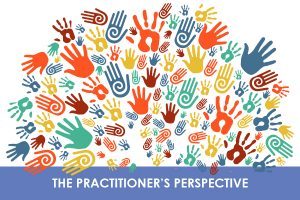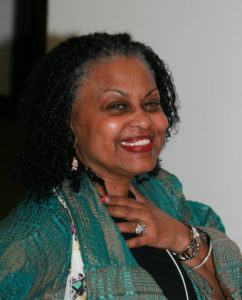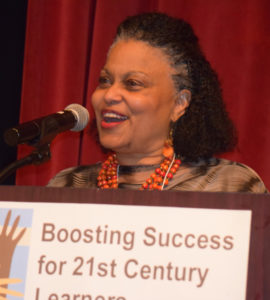Exploring Equity Issues - Blog

What Does it Mean to be a Culturally Responsive Leader?
By Pamela Higgins Harris
May 2018
Pamela Higgins Harris has spent more than forty years as an education equity leader. She centers her practice on the academic, emotional, and socio-cultural interests of diverse learners and marginalized populations. She is passionate about her capacity-building work with youth, educators, advocates and stakeholders who service these populations. Throughout her tenure, she has held leadership roles in professional development and school improvement. She has facilitated district-wide transformation and change, overseen district-wide equity assurance compliance and programs, and taught graduate-level instruction on topics related to diversity, equity, inclusion, and social justice. She is currently CEE’s Senior Consultant focusing on varied approaches to advancing culturally responsive and sustaining, systemic leadership through the lens of educational equity, tailored to the capacities and interests of the educators to whom she provides service.
MAEC sat down with Ms. Harris to discuss her perspectives on education equity and leadership.
MAEC: Thanks for taking the time to talk to us. Let’s begin with what it means to be an equity education leader?
 Ms. Higgins Harris (PHH): Being an education equity leader means that I am charged to model what it means to level the field of opportunity… and to do it in a way that goes beyond helping. “Beyond” means leading in a way that empowers diverse children and youth, with empowered support from their families to live, thrive, and reach the heights of their potential. This requires continuously elevating my knowledge, insight, and authentic engagement with diverse learners and those that teach them.
Ms. Higgins Harris (PHH): Being an education equity leader means that I am charged to model what it means to level the field of opportunity… and to do it in a way that goes beyond helping. “Beyond” means leading in a way that empowers diverse children and youth, with empowered support from their families to live, thrive, and reach the heights of their potential. This requires continuously elevating my knowledge, insight, and authentic engagement with diverse learners and those that teach them.
We all know that across the decades, the demographics in our school communities have continuously shifted and achievement and discipline data persistently show disparities in access to success for diverse learners. School community readiness, capacity, and provisions have tended not to keep up. In general, public schools have tended to be structured with a unilateral student profile in mind that no longer exists. Being an education equity leader means facilitating school district and schoolhouse capacity to transform institutional structures and operations in ways that are more aligned to the abilities and needs of the children and youth that live to learn there.
Ultimately, being an education equity leader means being actively attuned to the lived reality of today’s youth and their families. It means seeing below the surface and sharing discoveries together, guiding us to join with one another to act on what it takes to overcome inevitable barriers to success.
MAEC:We know you have done a lot of professional development and technical assistance around education equity and leadership. How do you usually begin?
PHH: While this is a simple question, it is likely the most important one….and that warrants a thoughtful response.
I think you are asking how I introduce participants in my training sessions to the concepts of cultural responsiveness. That misses an important step. I put a lot of work in before I even get to my training sessions, whether professional development, capacity-building, or in a professional learning community. I engage in intentional pre-thought centered on the participants. No group of participants or school situation is identical. I first consider the range of exposure participants are likely to have with issues related to culturally responsive leadership, all the way from rote knowledge of diversity (equality, equity, inclusion) to comprehensive insight into implicit bias/explicit bias, vulnerable decision-making, socio-cultural intersections of identity, institutional racism, and social justice.
 Next I consider ways that the topic and the PD experience may affect the participants. This could be any combination of curiosity, interest, uncertainty, frustration, enthusiasm, can-do efficacy, resistance threat, viewed as welcome growth opportunity, seen as unnecessary burden, transformative. I know from experience which things can work to produce maximum levels of engagement: a safe climate for meaningful dialogue, hands-on activities, real life scenarios, brief lecturette with handouts, information exchange via combinations of technology and face to face, interest in evidence-based practice. And I know that other factors can pose as barriers to their level of engagement, such as being distracted by feeling misunderstood, anxiety around a fear of being put down, experiencing something completely different to what they have to do every day.
Next I consider ways that the topic and the PD experience may affect the participants. This could be any combination of curiosity, interest, uncertainty, frustration, enthusiasm, can-do efficacy, resistance threat, viewed as welcome growth opportunity, seen as unnecessary burden, transformative. I know from experience which things can work to produce maximum levels of engagement: a safe climate for meaningful dialogue, hands-on activities, real life scenarios, brief lecturette with handouts, information exchange via combinations of technology and face to face, interest in evidence-based practice. And I know that other factors can pose as barriers to their level of engagement, such as being distracted by feeling misunderstood, anxiety around a fear of being put down, experiencing something completely different to what they have to do every day.
Once I actually meet with participants, I make sure to set the tone for the breadth, depth, challenge, and non-negotiable significance of the work that evolves. I guide educators to tap into aspects of their prior knowledge and experiences that have anything to do with leadership. I begin explaining that equity is often used interchangeably with equality. But that is misleading. Equal is not necessarily equity. In education, the problem is that equality ignores the diversity of real students in real communities and schools and the experiences they bring with them that shape who they are. Equity, on the other hand, acknowledges the different characteristics of students and looks at how students access curriculum programs, supports, and other opportunities. The goal for all learners is comparability in excellent opportunities and outcomes.
MAEC:We have heard you talk about the importance of core values and setting a climate for authentic engagement. Can you give us a quick synopsis of your approach ?
PHH: Absolutely…..core values are fundamental. They provide a pathway way to enter the door of engagement across culture and circumstance. It is important to ensure that each person feels represented, protected, and empowered. To encourage optimal growth. Core values set a context for personal and interdependent self-accountability. I frequently talk about the norms of culturally responsive leadership. I use REACHOUT as a way to explain it:
- Relate to others with mutual regard.
- Eliminate barriers to positive growth.
- Agree to disagree without judgment.
- Consider the lived realities of others.
- Help those that challenge you.
- Offer positive alternatives.
- Understand other points of view.
- Take time to model growth through conflict.
MAEC: Do you have any favorite ways to provoke moments of self-reflection in your students?
PHH: I like to quote Anais Nin, “We do not see things as they are; we see them as we are.” Note my emphasis on the last “we.” I think it aptly captures how we are the sum total of our lived experiences.
MAEC: Do you have any final thoughts?
PHH: I am optimistic about the notion that everyone has the ability to learn about what it takes to evolve as education equity leader. More importantly, I hope to share opportunities for more educators to tap into and act on their capacities and cultivate the will to evolve, to engage in what it takes to act as an education equity leader.
The Center for Education Equity (CEE) at MAEC is inviting members of our advisory board, partners, and other colleagues to share their views on current equity issues. Their opinions do not necessarily reflect CEE’s views or those of the Department of Education and we do not necessarily endorse any products or resources they promote.
